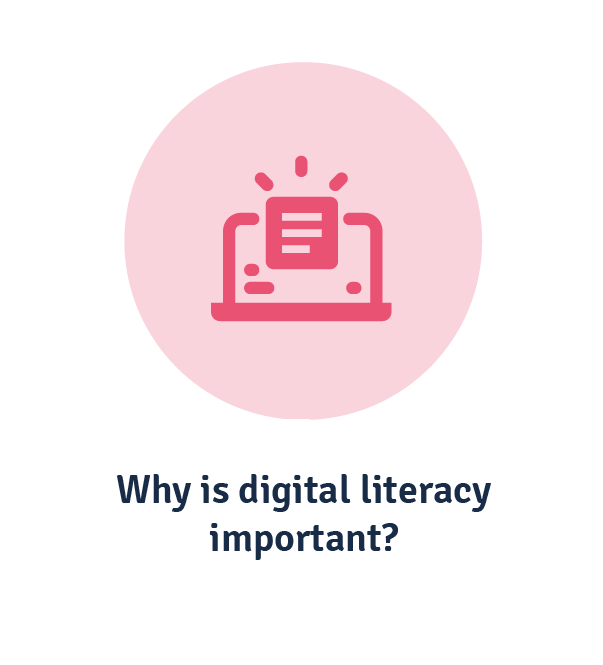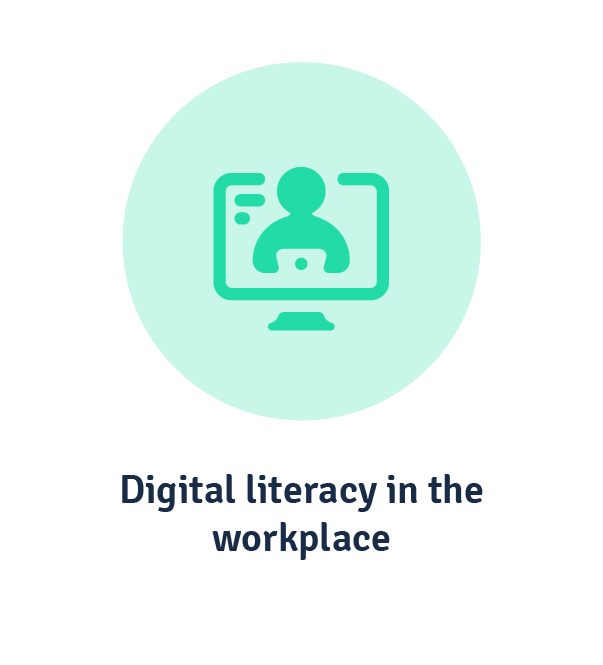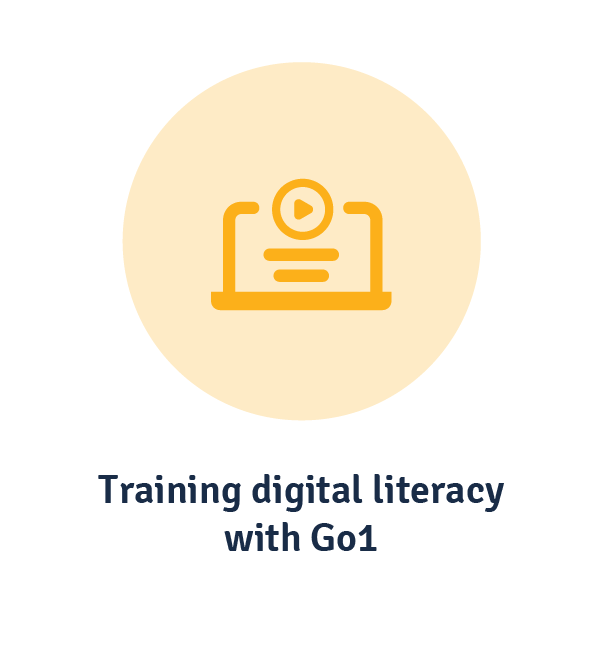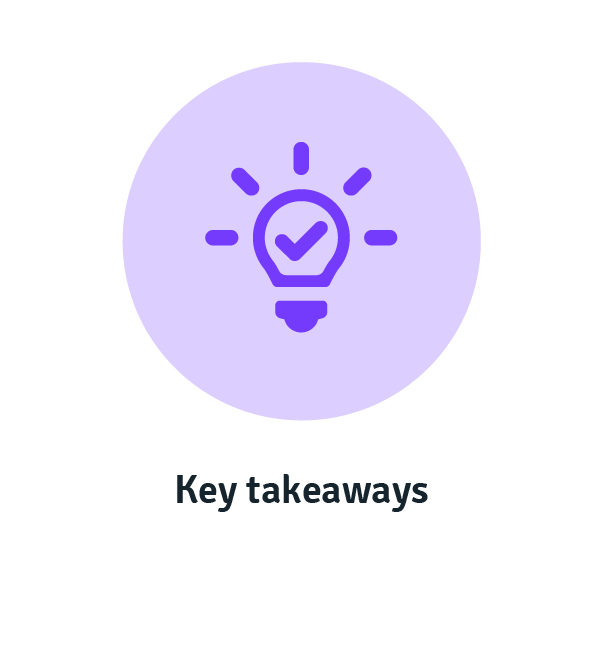Many things are second nature to the work world: Sending an email, automated pays, virtual meetings. However familiar they are to us now, they weren’t necessarily a standard work practice ten years ago and we can’t say they’ll be used in ten years, either. It’s for this reason that you want a digitally literate workforce.
Digital literacy underpins your company’s workforce planning strategies, reputation and ability to innovate. It can be taught, and is best done so with industry-leading content. That’s where an integration between your learning management system (LMS) and Go1 Content Hub comes in.
In this article, we’ll walk through how to implement digital literacy training, why it’s so important, and how a Go1 integration can help boost your organisation’s digital literacy.
What is digital literacy?
Digital literacy refers to the ability to find, evaluate and efficiently use digital media and tools to meet the demands of an environment that relies on digital technologies. Respectful communication, online security and privacy, and content creation are all digital skills, making digital literacy a combination of cognitive and behavioural capabilities.
Why is digital literacy important?
If it’s not on your agenda, it should be. Digital transformations can no longer be ignored. Automation, AI and digitalisation are here to stay and change the future of work in a big way. We’re a digitally-enhanced society, which means the workforce needs to be able to behave ethically, professionally and critically in digital spaces and with digital tools.
Let’s back up a bit. Having a digitally literate workforce is about more than being able to turn off a filter in a Zoom meeting. Digital literacy ensures your employees are aware of their digital footprint as representatives of your brand, remain at the forefront of industry-relevant knowledge, and can use ever-changing technology.
With this in mind, there are three main reasons you need a digital literate workforce:
- A sound set of digital skills, knowledge and behaviours is necessary to meet the expectations of a digital society—and customer base.
- Teams that lack digital literacy aren’t as productive and are unable to innovate in a way that keeps your organisation competitive.
- Digital literacy underpins diversity. People with disabilities or from poorer socioeconomic backgrounds are the most marginalised in terms of opportunities to develop digital literacy. Providing equal pathways for improving literacy bridges that divide.
All of this goes a long way to impacting your productivity, workplace culture and brand reputation.
Digital literacy in the workplace
Improving your workforce’s digital capabilities helps build more confident, competent employees. Continually training for digital literacy safeguards your organisation against disruptions, and ensures your workforce is both compliant and innovative.
Keeping employees skilled at the pace of industry change is a major part of fortifying your business for future success, while providing them opportunities to interact with new tools and concepts keeps them at the forefront of market knowledge. Literacy connects to wellbeing, too; employees who lack digital capability can find themselves frustrated, demotivated and isolated from outwardly literate peers.
We created the performance learning management system (PLMS) specifically to guide learners to master the (in this case, digital) capabilities of their roles that will accelerate both their own and the organisation’s performance. In line with your own capability framework, Acorn PLMS puts the right learning content in front of learners for their level of competence, ensuring learners develop at a pace that’s right for their needs and business goals.
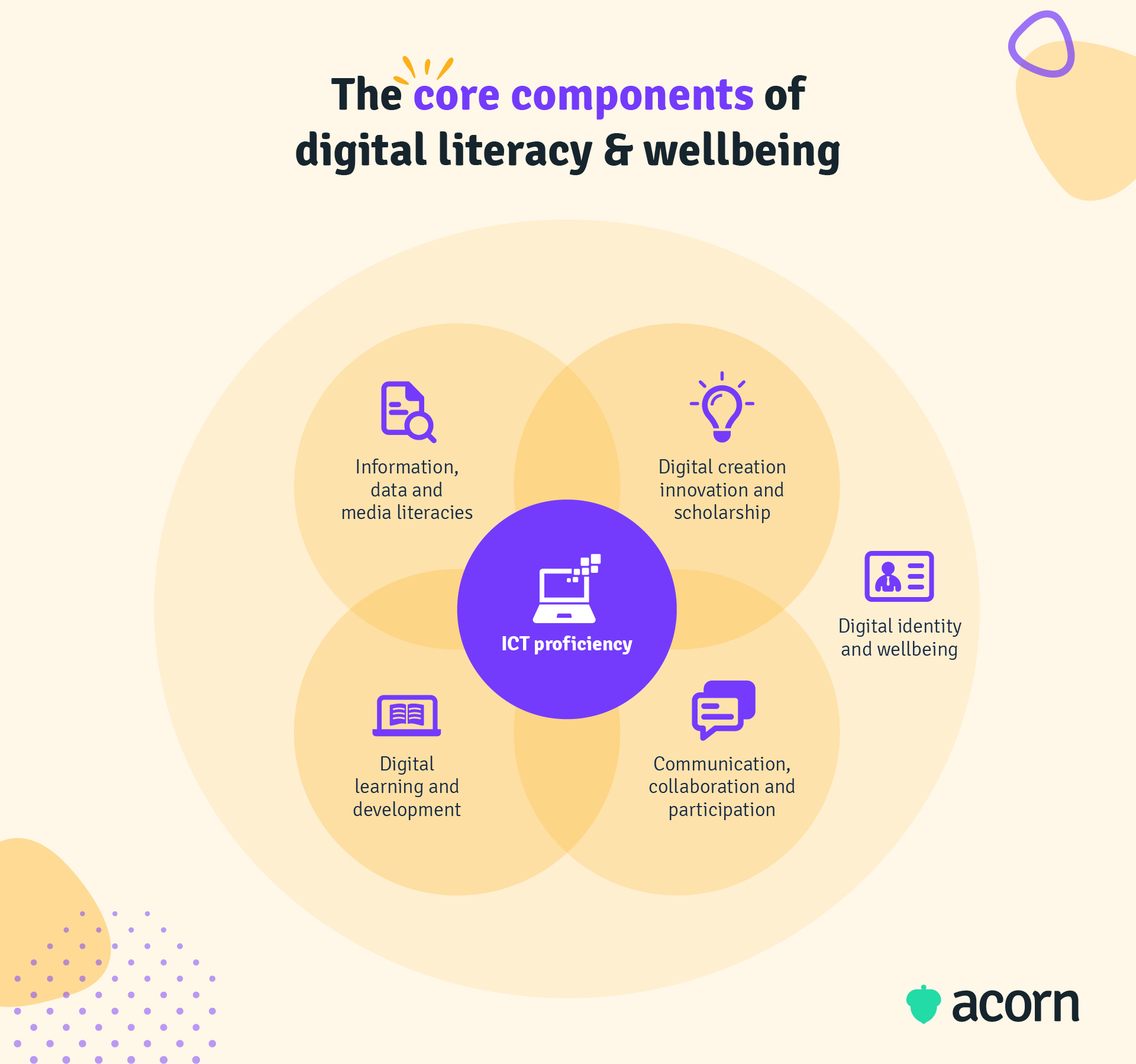
Aside from developing a happier, more engaged workforce, there are several technology-adjacent lessons that can be gleaned from digital literacy.
- Authenticity: Aka the ability to discern and filter authentic content in a vast sea of available digital resources. This goes a long way towards better critical thinking skills.
- Social responsibility: Technology can move into areas that aren’t regulated. (Think: Scam calls.) Communicating responsibly online can positively translate to workplace relationships.
- Online security: Along the same vein of scam calls, but venturing further down the path of security clearances and measures right up to government standards. Important when you work with cloud software, as one example.
- Representation: As we discussed, diversity and inclusion is a workplace non-negotiable, but also a source of disconnect if people aren’t turned down the right digital track.
- Data analysis: Identifying patterns and trends in information is a key facet of jobs such as social media and coding.
The ability to use technology to solve problems, find information and communicate with others underpins your organisation’s capabilities and success. And it’s an increasingly important skillset to have; Go1’s 2020 State of Learning Report found IT software—aka tech skills—was top of the list for L&D priorities. Consider that ‘technical skills’ covers everything from design programs (e.g. Creative Suite) and programming knowledge to mechanical equipment, and you can see how digital literacy can really drive or hinder business success.
Digital literacy is important for all generations
There’s long been this idea of ‘digital natives’ and ‘digital immigrants’. The dividing line was 1980; if you born before then, it was just assumed you would always been a step behind those who grew up immersed in technology. However, research has found that one’s age has no significant bearing on a person’s digital capabilities. Even Marc Prensky—the guy responsible for coining the terms ‘digital natives’ and ‘digital immigrants’—thinks it’s more a question of whether an individual, regardless of age, has been ‘digitally enabled’.
Don’t fall into the trap of mistaking taste for talent. It certainly doesn’t allude to any further aptitude for the ever-changing technologies your organisation relies upon. Just because a 20-something employee is always scrolling Instagram doesn’t mean they’re capable of translating that to marketing strategy. Likewise, one Baby Boomer’s preference for face-to-face chinwags isn’t a sign that they can’t run a virtual conference.

Training for digital literacy with a Go1–LMS integration
When employees are given digital literacy pathways, they are better equipped to understand how digital platforms and processes advantage their work and growth. That’s why an integration between a digital content aggregator like Go1 Content Hub and your learning management system is a killer combo.
A centralised catalogue of hundreds of thousands of curated learning materials enables you to:
- Align learning outcomes with capability frameworks.
- Better utilise eLearning platforms as a training tool.
- Access a richer library of content.
Align learning and business goals
If you know what capabilities you have and what you’re missing, it’ll be easy to devise training. A capability gap analysis or specific digital capability assessment gives you a much clearer picture of what capabilities employees already have and those they need to achieve personal and business goals.
Start by defining organisational objectives, and then chat to managers, review current job profiles and look at your existing technologies and learning programs. Look at the capabiilties that are in abundance and those that you are trying to build. Are there any that simply don’t exist, but you realise are crucial? Where are those capabilities considered crucial? And don’t forget the digital tools you’re already using. Are there ways to use them more efficiently? Building objectives from these elements will guide your digital literacy pathways.
Also consider the capabilities employees want to learn. Even as employees begin to engage with content that has been curated for them, they’ll find their own interests and needs aided by a Go1–LMS (or PLMS) integration. And the nifty thing about this lies in the power of automation: The more employees choose to engage with certain topics, the more the Go1 Content Hub will begin to recommend those for employees with similar capabilities and job roles. This empowers better personal career progression and helps:
- Close gaps in knowledge as they emerge, stopping them from becoming larger workforce risks in future.
- Deliver relevant learning content to different teams at no added cost to time or budget.
Other considerations for a capability gap analysis
- External disruption. What mega trends and industry changes are shaping the skills of tomorrow?
- If you’re working with capability frameworks, you’ll want to assign levels of competency to digital capabilities, and digital capabilities to job roles.
- There’ll be tasks that don’t need a manual helping hand, and these will have implications for related jobs and the workplace culture.
- Short-term bridges. Contractors can be a temporary resource for areas such as IT, as well as sharing knowledge to your staff while around.
Utilise digital platforms strategically
You can develop digital capabilities through the process of training for digital literacy. Getting employees hands-on with learning tools and platforms is a way to feed two birds with one scone, as well as drive employee buy-in.
Your LMS is likely a tool that employees are already familiar with. If not, a great function of LMSs and content aggregators is that they are designed to be user-friendly by reflecting the technologies most people are already familiar with. There’s a reason that content aggregators like Go1 are compared to Netflix; both interfaces are designed to be easily scanned and navigated. And since many in-demand skills are technical, you want employees to be able to learn them through and contextualise them in a digital environment that is important to your organisation.
You’ve then got access to certified courses on in-demand capabilities such as user-centred design, cybersecurity, and digital fluency. This is where you can really start to align learning opportunities with your capability needs. Post capability gap analysis, you’ll also have a good idea for learning interventions that can support your existing workforce. A Go1–Acorn PLMS integration, as an example, allows you to create learning pathways that correlate with your existing capability frameworks and map any resources from the Go1 Content Hub to those pathways.
In this way, you’re not only getting employees familiar with digital tools while training for digital literary, but also enabling succession planning, or pathways for certain teams and job roles to create strong foundational knowledge.
The real benefits of curated content
And that brings us to the specific content needed to build digital literacy. While you can develop content in-house, an integration between your LMS and Go1 is the best way to provide a rich library for employees—that they don’t need to wade through to find what’s relevant.
Unlike sourcing content directly from a single provider, Go1 hosts content from many. And many options of content providers offers many benefits.

1. Reduces administrative burden
A curated and integrated LMS library saves your L&D leaders time procuring or creating content, as it is easily accessible within the LMS.
2. Maximises resources
Along the same lines, it saves money on creating content, sourcing external instructors and/or engaging a content provider.
3. Improves ROI
The return on investment is large without the need for a big L&D team or a vast initial investment.
4. Current industry knowledge
Elearning content remains current as providers consistently update materials and Go1 introduces new content to their hub. As an aside, this helps you avoid outdated processes or thinking that can hinder innovation.
5. Enhanced value of content
Employees have access to learning resources created by industry professionals and accredited trainers such as Skillsoft and MindTools. Plus, as Go1 automatically makes any new providers available to all users, you need only sit back and watch as your LMS catalogue grows bigger and more diverse.
6. Diverse learning pathways
There can be no argument for favouring one team or learning preference over another, nor do you need to compromise on the learning pathways you have deemed necessary for business success.
Key takeaways
Training for digital literacy is an exercise in improving productivity, satisfaction, efficiency and sustainability. Without even a foundation of digital literacy, your employees won’t be able to keep pace with technological changes, industry upheavals or their own career goals.
This is because digital literacy enables:
- Respectful communication
- Fair representation
- Easier collaboration
- Critical thinking and data analysis
- Innovation
- Lifelong learning.
It’s important to implement digital literacy pathways in your organisation for all employees. Start by identifying capability gaps driven by market disruption, automation or changing business goals.
From there, utilise digital platforms you may already have, like an LMS. As an inherently digital platform (meaning it can offer hands-on learning experience for employees as they study), you can integrate your LMS with content providers like Go1 to create a richer and more meaningful learning experience. Go1’s library hosts industry-certified courses on everything from data analysis to using technical products, making it time and cost-saving tool for developing employees.
Contact us today if you’d like to know more about how Acorn PLMS and Go1 can help you fortify your organisation’s digital literacy.
Related Reads on This Topic
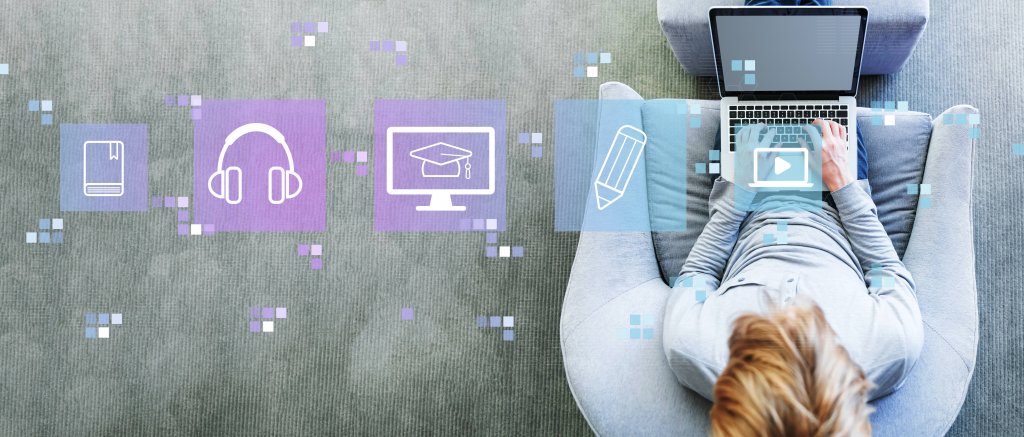
The 6 Benefits of Adaptive Learning with a Go1–LMS Integration
Learn how adaptive learning can help your students and employees learn faster and more effectively, using Go1’s content library and your LMS…
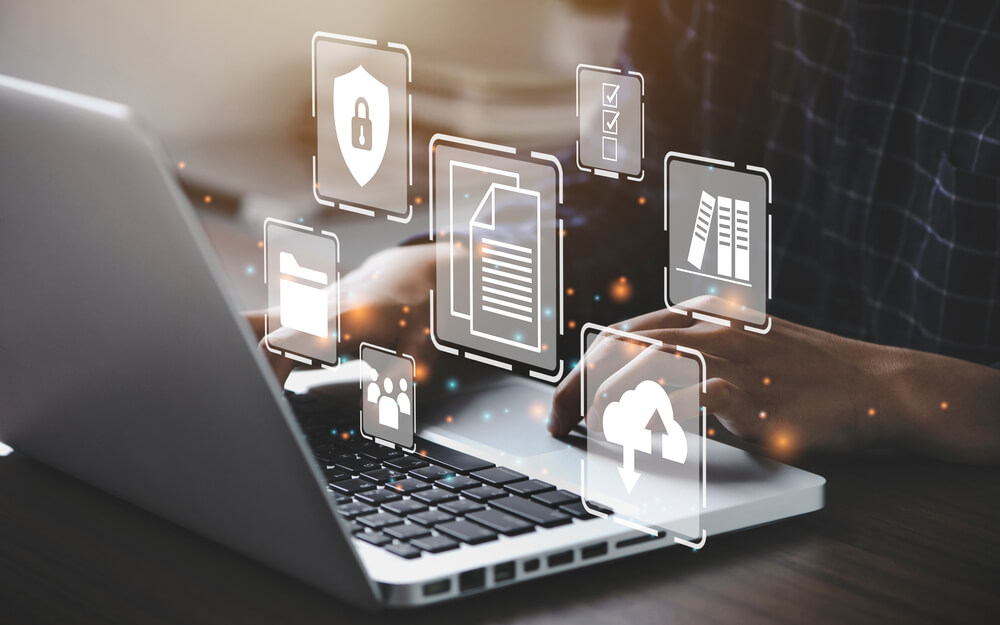
What You Need to Know About WCAG Accessibility Compliance
Discover what you need to ensure WCAG 2.0 compliance and improve web accessibility standards for all users…

How To Unlock and Develop Crucial Employee Skills in Your Workplace
Learn how you can uncover hidden talent and achieve business goals by developing the skills of your employees…

